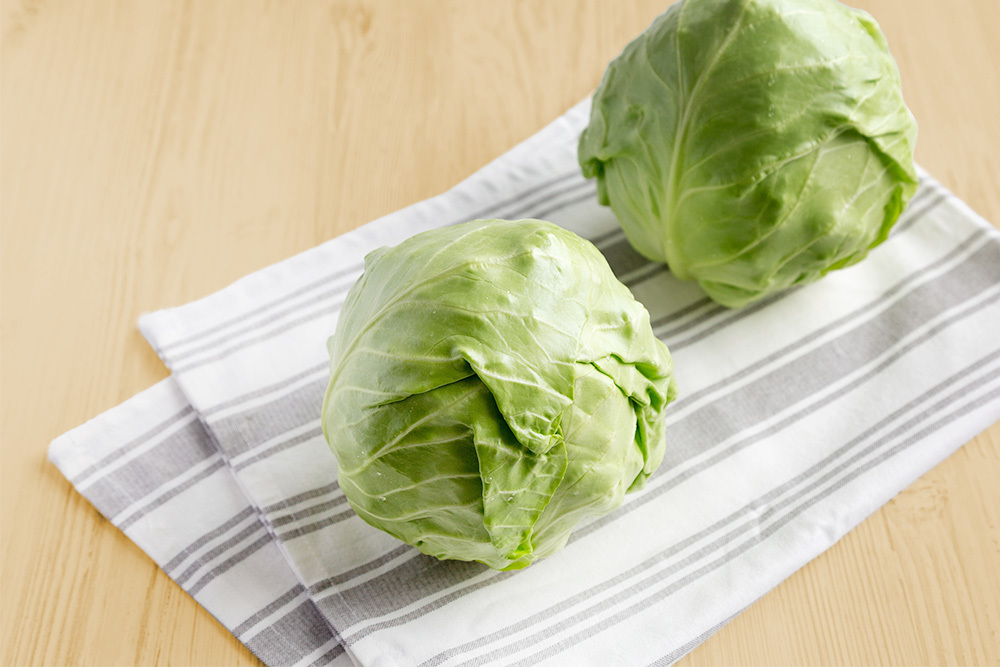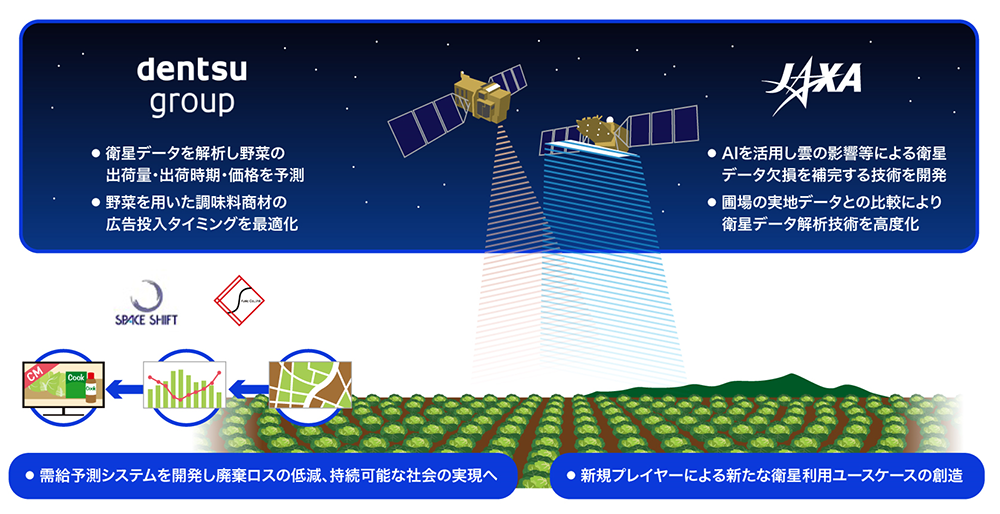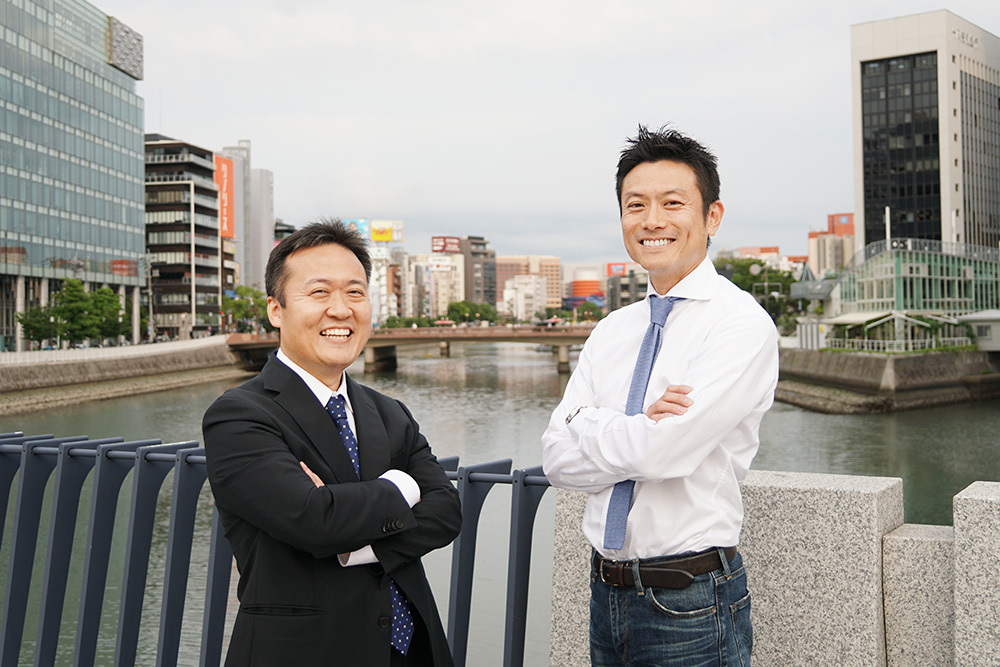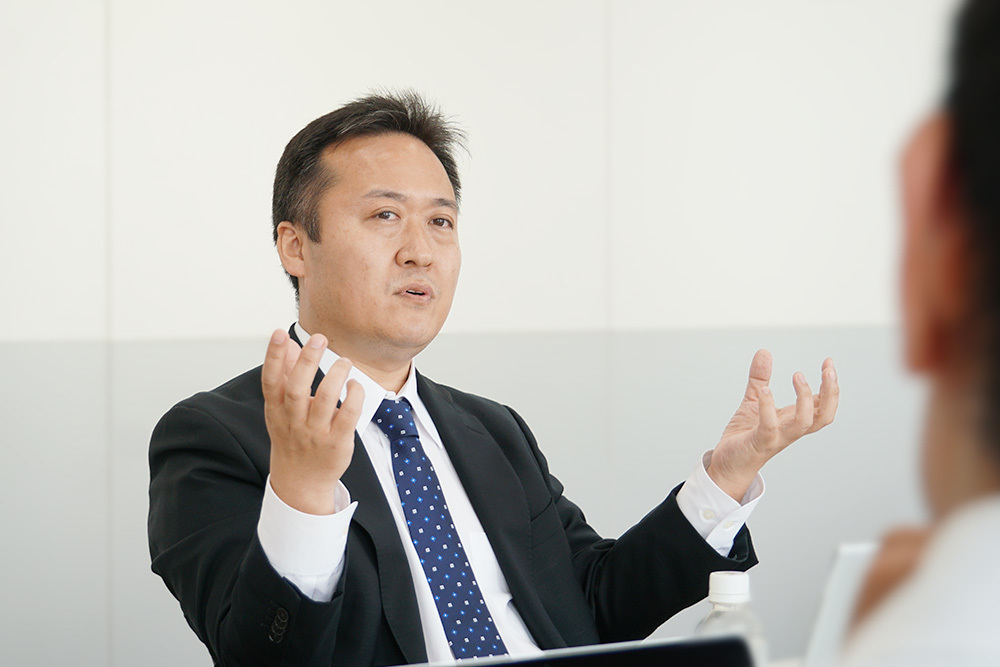Note: This website was automatically translated, so some terms or nuances may not be completely accurate.
Fields, Space, and the Dinner Table. Optimizing Supply-Demand Linkage through Satellite Data and TV Advertising Integration (Looking for members to join us!)
The reason that twice-cooked pork you ate last night was so delicious might be because space is involved. The reason that cabbage harvested from your field the day before yesterday sold well in a town far away might be because AI was involved. Kei Yamamoto, who works on space business at Dentsu Kyushu Inc., explains these seemingly elusive concepts in an easy-to-understand way. The keyword is "supply-demand linkage."

What is this "Supply-Demand Coordination" that benefits everyone?
One evening. A supermarket in a certain town. Mr. A's eyes are drawn to the cabbages displayed in large quantities in the most prominent spot of the vegetable section. They look good. They're a nice color. The price is low too. "Oh, cabbage is in season now..." Just as he picks up a head, he remembers the commercial for stir-fried pork with cabbage he saw several times on TV yesterday. "That's it, I'll make stir-fried pork with cabbage tonight," Mr. A murmurs to himself...
Would you be surprised to learn that it wasn't coincidence that cabbage was in season that day, that it was prominently displayed in the produce section that day, or that Mr. A had seen that stir-fried pork with cabbage seasoning commercial multiple times the day before?
But this kind of thing is becoming a reality now.

Cabbage is divided into "spring cabbage," "summer-autumn cabbage," and "winter cabbage (cold-hardy)" based on harvest time, reaching peak season several times a year. When it hits peak season, harvest volume increases, supply rises, and prices drop. This isn't limited to cabbage; the tastiest, in-season period is always the cheapest.
However, this peak season fluctuates based on that year's climate conditions, like temperature and rainfall. So, even when the peak season arrives, if consumers aren't sufficiently encouraged to buy, not all produce gets shipped out, leading to waste. That's what we call food loss.
Conversely, if the peak season for cabbage—the timing when prices drop—could be accurately predicted, food manufacturers could maximize TV ad spending for their seasoning products, supermarkets could create dedicated displays featuring it as a featured item, and dynamic strategies could be employed to stimulate purchasing.
This July, the Japan Aerospace Exploration Agency (JAXA)and the Dentsu Group established a business concept co-creation agreement (JAXA Space Innovation Partnership Agreement). It aims to achieve "optimized supply-demand coordination" by linking JAXA's Earth observation satellite utilization technology with the advanced advertising capabilities of "RICH FLOW," an operational TV advertising system developed by the Dentsu Group.

Let's return to the opening episode about cabbage. What benefits lie hidden within this story? Here they are: Cabbage farmers can distribute their large harvests of peak-season cabbage without waste. Supermarkets can create special offers featuring seasonal cabbage as a flagship product, boosting sales. Food manufacturers can launch TV commercials for related products like seasonings and sauces timed to coincide with cabbage's peak season. Consumers can enjoy delicious, affordable dishes made with fresh, seasonal cabbage. It's a system where everyone and society as a whole benefits. This is the "optimization of supply-demand coordination" that brings advantages to all.
Expanding the reach of supply-demand linkage into a public system
This chapter introduces efforts toward supply-demand optimization and future prospects through a dialogue between Dentsu Inc. Radio & TV BP Bureau GM Kishimoto, the project manager for the "RICH FLOW" system, and Fusic President Notomi, who oversees data analysis and price prediction models.

Nobutomi: The "RICH FLOW" TV advertising system is described as an operational system.
Kishimoto: Commercial slots are always crowded, and the creation of broadcast schedules for these slots is primarily handled manually by the broadcasters' scheduling desks. This means that even if an advertiser wants to make changes to a completed schedule proposal, it can be difficult to accommodate those requests.
Therefore, we developed the "RICH FLOW" operational TV advertising system. It utilizes AI for viewership prediction and a reallocation algorithm to simulate large-scale commercial slot reallocations among advertisers. This enables us to match each advertiser with suitable broadcast slots and desired airing times. Looking ahead, we are also considering combinations like using quantum computers—AI for predictions and quantum computing for allocation.
Nobutomi: I resonated with the concept of linking "RICH FLOW" with satellite data-driven harvest and price forecasting to create a beneficial system for producers, consumers, and society.
Therefore, Fusic is also experimentally analyzing satellite images for cabbage and spinach farmers. For price prediction, we want to capture the production area at a somewhat macro level, not just a single field. While drone images are clearer, satellites can capture the macro view.
Kishimoto: How did it go? Any challenges?
Nobutomi: First, there's no training data. We see something on satellite, but we need to verify what was actually happening in the field. We have to go on-site and directly ask the people working there about the cultivation schedule for that field, when harvest occurred, and so on. It was challenging, but we've managed to establish a method to identify harvest periods. However, since satellite image reception isn't real-time, I think that remains a challenge.
Another challenge is how to ensure the reliability of our predictions. For price forecasting, we'd ideally want to observe all the fields supplying a given market. But can we find them via satellite? Or is there some kind of ledger that tells us which fields are growing what and when, that we could cross-reference? These are things we've learned through doing.

Kishimoto: Collaboration with farmers is definitely essential. But there are limits to how often we can visit the field. I'd be delighted if this project created opportunities for farmers to understand the benefits. If they feel tangible advantages—like easier production planning or reduced waste—we could see an inbound flow: them asking how to provide information or what data they need.
For food manufacturers, distributors, and retailers alike, I hope we can synchronize the supply chain and make the collaboration methods visible—showing how aligning timing in this way can boost sales.
Nobutomi: It's about aligning everyone's direction. The key point is the chain's endpoint—the consumer, right?
Kishimoto: I previously visited the National Agriculture and Food Research Organization (NARO, Tsukuba City, Ibaraki Prefecture) and learned about cutting-edge agriculture using AI. They're researching amazing technology, but what stuck with me from the discussion was their point that while the supply side is optimizing with technology, they don't know when demand will surge or when buyers will want the products.
Nobutomi: So without coordination with the demand side, true optimization isn't possible, right?
Kishimoto: Yes. While this project won't solve everything, I believe it has the potential to address some of these issues.
I also heard that coordination among production areas is a challenge. There are about 50 produce markets nationwide. Sometimes one market has too much supply from a certain region, while another market is short, making optimal logistics allocation difficult. For farmers, this can mean missed opportunities to sell at higher prices in other regions.
If we have data that provides an overview of these production areas and can stimulate demand through commercials, I believe we could potentially be of help. The ideal state would be one where consumers, producers, and distributors can buy and sell consistent quantities at stable prices without major fluctuations. Aligning everyone's perspective and making this system public would be the ideal.

Nobutomi: Whether it's cabbage prices or other goods, there are those who want to sell high and those who want to buy low, each acting arbitrarily. This leads to increasing or restricting supply. While it achieves partial optimization, the question remains whether it truly benefits the overall interest. For overall optimization, we first need to visualize the facts. Then, much like how autonomous driving alleviates traffic congestion, we need to eliminate human decision-making from the process.
Kishimoto: Regarding stabilizing cabbage prices, a state free of human intervention might look like this: advanced cabbage price forecasting using satellites, for example, enables automatic restructuring of commercial slots. Consumers can purchase vegetables at their peak season, and delicious dishes grace the dinner table. If advertisers decide to utilize this system, we might see a future where significant manual labor is eliminated, arbitrariness disappears, and overall optimization progresses.
While cabbage and seasonings are familiar examples here, similar systematization might be possible for other products and services. I believe numerous new values can emerge from the integration of DX infrastructure established on the client/producer side with dynamic marketing platforms like "RICH FLOW."
By utilizing alternative data (referring to big data obtained from satellites, IoT devices, SNS, etc. The antonym is traditional data = government agency statistics, corporate management/ESG information, etc.), facts that were previously unseen become visible, revealing a new world. We want to expand possibilities under the concept of supply-demand linkage.
Nobutomi: Regarding satellite data applications, Orbital Insight (an AI startup in Silicon Valley, USA) is a well-known example. They observe storage tanks in oil-producing countries to measure stockpile levels. Investors purchase this information to inform investment decisions in stock and commodity markets. (Author's note: Oil tanks use "floating roofs" where the roof floats on the crude oil. The volume of contents causes the roof to rise and fall, so observing the size of the shadow on the tank wall from above reveals the stockpile level.) This creates a practical application for marketing.
Kishimoto: While advertising alone often leaves things unclear, in agricultural fields or factory production lines, there are various initiatives and needs around demand forecasting. Where these align with the strengths of satellite data, I believe we can discover second and third materials and use cases, following cabbage.
Nobutomi: That's right. Or, for luxury goods like coffee beans, satellites could reveal which acidity or bitterness, or which region's beans, match a person's specific preferences. As a core technology for building marketplaces, it might also create new sales channels and increase demand.
By the way, how do you see the future challenges for the project?
Kishimoto: We want to make this system public, but to do so, we need to ensure it provides value to every stakeholder. Sellers want to sell at the highest possible price, buyers want to purchase at the lowest possible price, and the players in between want to maximize their profits. While these objectives often conflict, I believe a crucial point for this project is whether we can build a system where a stable volume of vegetables and related seasoning products circulate at stable prices, increasing total sales volume and boosting overall revenue. Furthermore, I believe it's vital whether such initiatives gain consumer support. This can happen by ensuring vegetables appear on tables during their peak season and reducing food waste. While the project has only just begun, I truly hope we can aim for such a future.
Nobutomi: It would be great if this project attracted participants from a wide range of fields, not just AI and IT. For example, agricultural experts, food distribution specialists, and local experts like banks. Under the umbrella of this supply-demand linkage initiative, having people from various fields join us seems like it could create diverse demand. Something I've noticed is that people involved in space ventures tend to be very open-minded. So, we're actively recruiting alliance members. Our company is seriously recruiting too (laughs).
Synchronizing Demand and Supply Using "RICH FLOW"
Simply put, this initiative involves using satellites to observe cabbage fields, predicting peak harvest times and retail prices. This data links with our operational TV advertising system "RICH FLOW" to increase airtime for seasoning commercials through schedule adjustments, thereby stimulating consumption. JAXA is also reportedly interested in this approach as a satellite application focused on demand creation.
The diagram below illustrates the supply-demand linkage mechanism. The key to optimizing the supply chain lies in synchronizing demand and supply. Based on this concept, a sustainable model is envisioned that increases demand, reduces waste, and benefits everyone. "RICH FLOW" serves as the foundation for this.

Thanks to this system, alternative data connects not only to analysis but also to consumption, the end of the chain. This is the novel aspect. While cabbage is the target product, implementation for other items and non-agricultural fields is also being pursued. As this business story is constantly evolving, we will provide updates.
【Transformation SHOWCASE】Related articles here
Leveraging satellite data as the foundation for future marketing. The new world created by space business
https://transformation-showcase.com/articles/204/index.html
Was this article helpful?
Newsletter registration is here
We select and publish important news every day
For inquiries about this article
Author

Yamamoto Kei
Dentsu Kyushu Inc.
Essential Marketer / Producer / Chief Director for Space Business Creation Promotion
Member of the specialized team 'Dentsu Space Lab,' which handles a wide range of activities from collaborations with JAXA to supporting space venture businesses. Around 2005, he met manga artist Leiji Matsumoto, originally from Fukuoka, who was then Chairman of the Japan Space Cadets promoting space education activities. Since then, he has consistently worked under the theme of "making space a reality for business." Even now, alongside diverse client work unrelated to space, he dedicates equal effort to space-related endeavors, actively focusing on marketing support for food and agriculture utilizing satellite data.


